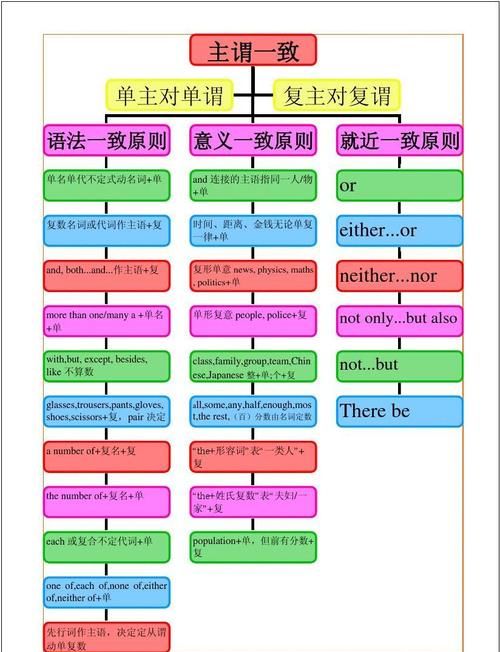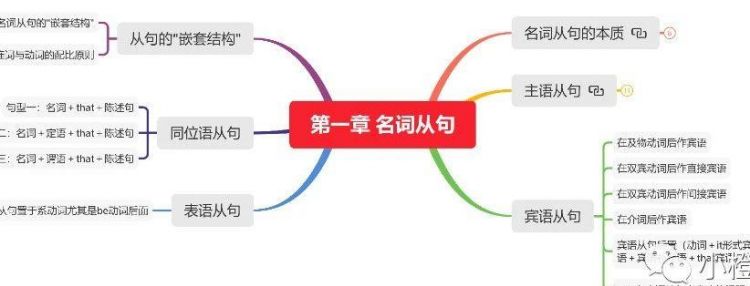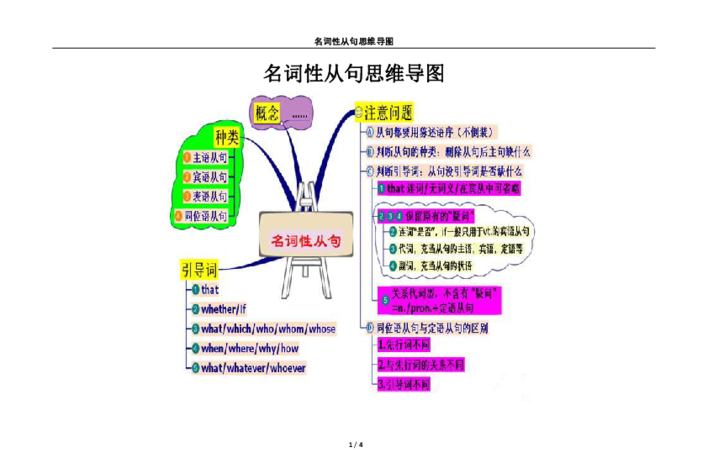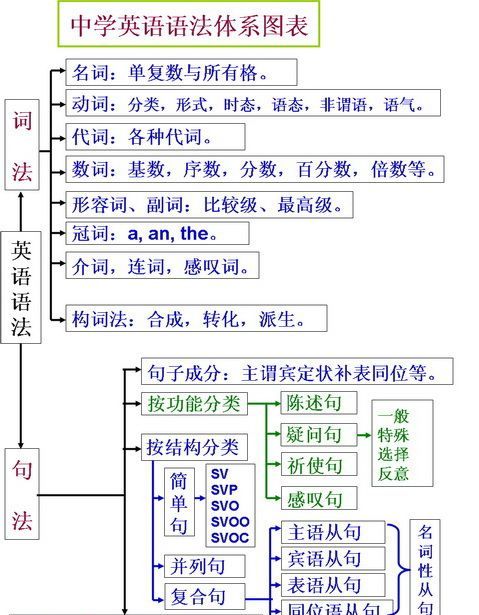本文目录
英语语法8种名词做主语主谓一致原则是什么
英语语法是英语知识中十分重要的环节,希望以下文章对您有所帮助!
英语语法一
专有名词是指某个人、某种物、某件事、某个地点所专属的名称,如具人、地、物、地点、机构、节日、月份、国家或地区等的名称。专有名词首字母大写,通常情况在句子中前面没有限定词。比如My name is James.这里James是我的名字,是一个专有名词。但也有例外,如the People's Republic of China (中国)前面就有定冠词the,专有名词一般都是单数形式。更多关于专有名词的解释详见专有名词解释。
本文将主要介绍专有名词中的人名相关知识,如前面例句中James就是人名。先来看一段小学生学习的英文片断:
Three days before her birthday party,Sally writes down the names of her friends.They are all coming to her party.
Jill
Kim
David
Lisa
Tom
Mat
Wendy
For a person's name,you use a special type of noun.It is called a proper noun.
如果有一定英语基础这一段英文应该能看懂其意思,没有英文基础的朋友用翻译软件翻译一下。片段中的Sally,Jill,Kim,David,Lisa,Tom,Mat,Wendy都是英文名,在文中人名第一个字母要大写,指的是已知的特定某人,前面没有定冠词。
但是在某些时候人名前会有不定冠词或定冠词,这时专有名词就变成了普通名词。
1、人名是专有名词通常前面不用冠词。
a.表示人名的专有名词,包括那些前面带有尊称或头衔的专用名词,前面一般不用冠词。如:
John is from London. 约翰是伦敦人。
Mr.Collins was excellent in his perfromance. 柯林斯先生的表演很精彩。
Professor Stamp was born in 1898,and educated at King's College,London. 斯坦普教授生于1898年,在伦敦皇家学院受的教育。
b.艺术家的名字前如用不用冠词,可以指其人的全部作品。如:
Bach gives me a lot of pleasure. 巴赫(的音乐作品)给了我很大享受。
He likes Keats.他喜欢济慈的诗歌。
2、姓氏(姓名)前用不定冠词a/an的用法:
a.加在姓氏前表示“某个叫...的人;某位姓...的人”(说话人只知道姓氏,不知道名字或者说话人内心有所指,但又不十分明确,或说话人有意隐瞒)。如:
A Miss Johnson called you yesterday. 有一位约翰逊小姐昨天打电话给你。
There wasn't a single Jones in the village. 村子里连一个叫琼斯的人也没有。
A Tom Smith is waiting for you downstairs. 一个叫汤姆.史密斯的人正在楼下等你。
b.借喻,表示“和...相似的人”。如:
He is a Lei Feng of today.他是当代的雷锋。
We need a Washington today.今天我们需要华盛顿那样的人物。
He wants to be an Einstein in the future. 他想将来成为爱因斯坦式的人物。
c.加在作家、画家等姓名前表示“一件...的作品;一幅...的画像(或雕塑等)”。如:
There's a Rembrandt in her collection. 他收藏品中有一幅伦勃朗的画。
I have read a new Wells recently. 最近我读了威尔斯的一部新作。
Have you got a complete Shakespeare(=a set of Shakespeare's complete works)?你手头有莎士比亚全集吗?
Experts think the painting may be a Picasso. 专家们认为这幅画可能出自毕加索的手笔。
d.加在姓氏前,表示“某家族(或家庭)”中的一个成员。如:
Is that a Wilson over there?那边那个人是威尔逊家的人码?
His wife is a Stuart(=a member of Stuart family).他的妻子是斯图亚特家的人。
e.加在姓氏前表示“某人的发明或设计”。如:
He bought a Underwood last year. 去年他买了一台安伍德牌打印机。
f.人名前还可以加“a(n)+adj.”表示特别的意思。如:
We were met at the door by a smiling Mary,not by an angry Mary.在门口迎接我们的是微笑的玛丽,而不是生气的玛丽。
A sad-faced Charles came in the meeting room. 满脸愁容的查尔斯走进会议室。
3、定冠词the+人名的用法
a、通常情况下,已经转化为类名词的人名大都能与the连用。如:
Lu Xun was the Gorky of China. 鲁迅是中国的高尔基。
Guan Hanqing is considered to be the Shakespeare of China.关汉卿被认为是中国的莎士比亚。
b、“the+adj.+人名”可以强调某人暂时的特征或状态。人名前面或后面加定语把某人与其它同名的人区别开来时也要用the.如:
The frightened Jack returned home for two guns.惊恐万分的杰克回家取了两支。
The William I know was a hunter. 我认识的威廉是个猎人。
c、“the+复数姓氏”可以表示某姓的一家人或夫妻俩、兄弟俩、姐妹俩等。如:
The Bakers will leave for New York tomrrow. 贝克一家人明天要去纽约。
It took the Loisels ten years to pay off their debts. 卢瓦泽尔夫妇用了十年才还清了债务。
d.表示所指之人是听、说双方都作同一理解的那个知名人士时该人名前要用the.如:
--She is a distant relative of Henry Ford.她是亨利.福特的一个远房亲戚。
--Is she,indeed?The Henry Ford?真的吗?你是指那个有名的亨利.福特?
--Yes,the Henry Ford.是的,就是那个众所周知的亨利.福特。
英语语法二
population 英 [ˌpɒpjuˈleɪʃn] 美 [ˌpɑ:pjuˈleɪʃn]
population的基本意思是“人口”,是个集合名词。(集合名词有些只表示复数意义,<如people,例句:People are not interested in such things.人们对那样的事不感兴趣。这里People是复数,所以用谓语用are>;有些只表示单数意义,<如furniture(家具),例句:Some furniture is made of bamboo. 有些家具是竹制的。这里furniture是单数,所以谓语用is>;有些集合名词根据情况来确是是单数意义还是复数意义,<如family,例句:His family isn’t very large. 他家成员不多。His family are music lovers. 他家个个都是音乐爱好者。>)。population在不同用法中可以是单数意义也可能是复数意义。
下面详细谈一下population的用法
1、population常与定冠词the连用,作主语用时,谓语动词常用第三人称单数形式。例如:
The world's population is increasing faster and faster.
全世界的人口增长得越来越快。
At the beginning of the twentieth century, the world's population was about 1,700 million.
在二十世纪初,全世界的人口大约是十七亿。
2、当主语是表示"人口的百分之几、几分之几"时,谓语动词用复数形式。例如:
About seventy percent of the population in China are farmers.
中国大约有百分之七十的人口是农民。
3、有时population可用作可数名词,其前可用不定冠词。例如:
China has a population of about 1.3 billion. (=There is a population of about 1.3 billion in China.)
中国大约有十三亿人口。
New York is a big city with a population of over 10 million.
纽约是一个有一千多万人口的大城市。
在表示多个地区的人口时,population要用复数形式populations。例如:
Many parts of the world, which once had large populations and produced plenty of crops, have become deserts.
世界上很多地区一度人口众多,种植大量的农作物;现在,这些地区已经变成了沙漠。
4、表示人口的"多"或"少",不用"much"或"little",而要用"large"或"small"。例如:
India has a large population. 印度人口众多。
Singapore has a small population. 新加坡人口少。
5、询问某国、某地有多少人口时,不用"How much...?",而用"How large...?";在问具体人口时用"What...?"。例如:
How large is the population of your hometown? 你们家乡有多少人口?
The population of our hometown is nearly twice as large as that of yours.
我们家乡的人口是你们家乡人口的将近两倍。
What is the population of Canada? 加拿大的人口有多少?
The population of Canada is about 29 million. 加拿大的人口大约有二千九百万。
6、population还表示"某地、某类的动、植物或物品的总数"。例如:
In India, however, the population of tigers has increased, from 2,000 in 1972 to about 5,000 in .
然而在印度,老虎的总数已从1972年的2,000只增长到了年的大约5,000只。
英语语法三
一、如果主语是不可数名词,动名词,不定式或从句的时候,谓语动词用单数.
Smoking is not a good habit.
To live happily needs a lot of things.
What I said is true.
二、如果由and连接的两个做主语的单数名词指的是同一个人或物的时候,用单数动词.
The singer and songwriter is dead.
The science and technology plays an important part in China.
Bread and butter(=buttered bread) is a good food for patients.
“War and Peace” is the best book I have ever read.
如果由and连接的两个或更多的主语之前有each, every, many a/an, no的时候用单数名词.
Every boy and girl in the class works very hard.
Each minute and second is valuable to us.
三、主语是单数, 后面跟有with, along with, together with,besides, as well as, but, except, no less than,rather than, more than, like, including, in addition to 的时候, 谓语动词用单数.
Jack with his family wants to go to China.
He, as well as you, is very honest.
No one but I is a student.
Her brother, together with his wife and children, was killed in the accident.
The father, rather than the brothers, is responsible.
四、由some, any, no, every构成的复合代词(sb,sth---)和each, either, neither, one, the other, another, little, a little, much, no one, nothing做主语的时候,谓语动词用单数.
Each of you is cleverer than me.
Neither student has passed the exam.
Is anybody here?
五、both, few, a few, several, many以及others做主语的时候,
永远用复数动词.
Several friends were invited to the party.
Both books are sold out.
六、all, none, any, some, more和most要是修饰单数名词,谓语动词用单数; 若是修饰复数名词,就用复数动词.
Most of the apple is bad.
Most of the apples are bad.
None of this money is yours.
None of the people here are teachers.
七、 由or连接的两个以上主语时,动词和最接近的主语一致.
You or he is wrong.
Are you or he wrong?
由either…or, neither…nor, not only…but also连接的两个以上主语时,动词和最近的主语一致.
Either he or you have to tell the truth.
Neither my brother nor his friends are over 18 years old.
Not only the basketball players but also the coach was very nervous.
八、若主语的复数名词表示的是”一段时间”, “一笔钱”, “一段距离”, “一个数量”, “一个面积”的时候用单数谓语动词.
Two weeks is to enough for me to finish it.
Five thousand dollars is too much.
Ten kilometers is too long for me to run.
九、people(人民), police, cattle(牛群)等常用复数动词. 有一些集体名词,如果表示的是整体就用单数动词, 如果表示的是其中的个体就用复数谓语动词.这样的词常见的有family, class, audience, public, team等等.
His family are all singers.
His family is very large.
十、关系代词在定语从句中作主语时,谓语动词与先行词一致。
Those who want to go please sign their names here.
十一、一些名词只有复数形式,如clothes, scissors, trousers, shorts, scales 等, 作主语时谓语用复数形式
The scales 天平 are mine.
但是成双的东西前面有a pair of 要用单数。
This pair of scissors belongs to the tailor.
十二、如果主语由“a kind of ( a series of ) 构成, 谓语一般用单数形式。
This kind of men is dangerous.
如果是多种,谓语动词要用复数。
There are many kinds of apples.
十三、算术式通常用单数。
十四、ics结尾的学科用单数谓语动词。
十五、书名,剧名,报纸名,国名的复数名词作主语,谓语动词用单数。
The united states is a capitalist country.
“ The Arabian Nights” is a very interesting story-book.
十六、“the+形容词(分词)“ 指人谓语动词用复数形式。指抽象谓语动词
用单数。
The English speak English.
The new always beats the old.
十七、who, what, which, all,more, most some, any, none,
half, the rest, the remainder 等作主语要看各自的情况。
十八、one and a half 加复数名词作主语谓语动词用单数。
One and a half bananas is left on the table.

英语中主谓一致的要点是什么意思
主谓一致要点归纳
英语中,句子的谓语动词要与句子的主语在人称和数上保持一致,即主谓一致。一般来说,主谓一致要遵循三个原则:语法一致原则,意义一致原则和就近原则。语法一致原则就是指谓语动词的单复数形式由主语的单复数形式决定;意义一致原则是指谓语动词的单复数形式由主语的意义而不是形式决定,即使主语的形式是复数但意义上是单数的话,谓语动词也要用单数形式;就近原则是指谓语动词的形式由靠近它的名词的数决定。
一、以 s 结尾的名词作主语时的主谓一致
1. 如果以 s 结尾的名词表示的是学科或国家时,句子的谓语动词要用单数形式。如:
Physics is such a difficult subject that I can’t understand it .
The United Nations is made up of more than one hundred countries .
2. 有些以 s 结尾的名词表示两个对称部分组成的事物,如 trousers,shoes,glasses,scissors
等,它们单独作主语时谓语动词要用复数,但如果前面有 a / this pair / sort / kind of
等修饰时,则谓语动词要用单数形式。如:
My shoes are the gifts from my grand - mother .
This kind of shoes is very popular this summer .
3. 有些以 s 结尾的名词如 goods (货物),arms (武器),clothes (衣服),thanks
(感谢)等只作复数用,作主语时谓语动词要用复数形式。如:
All the goods were shipped from America .
All the arms you want have been prepared .
4. 一些单复数形式相同的以 s 结尾的名词如 means (方法),works (工厂),headquarters
(总部)等作主语时,如果强调单数意义,则谓语动词用单数形式;如果强调复数意义,则谓语用复数形式。
如:
All the means have been tried to save the patient .
The quickest means of travel is by plane .
二、集体名词作主语时的主谓一致
1. 只能作不可数名词的集体名词如 furniture (家具),machinery (机器),equipment
(设备)等作主语时,谓语动词要用单数形式。如:
The advanced equipment has been offered to the factory .
All the furniture in my home is made in Hong Kong .
2. 只能用作复数的集体名词如 people,police,cattle (牲畜)等作主语时,谓语动词要用复数形式。如:
The working people are brave and great .
The police were searching the area for two thieves .
3. 还有一些既可以用作复数又可以用作单数的集体名词,如
team,class,family,club,government,public
等作主语时,如果强调整体,则谓语动词用单数形式;如果强调个体成员,则谓语动词要用复数形式。如:
My family is a happy one .
All my family are fond of taking exercise .
三、由 and 连接的两个名词作主语时的主谓一致
1. and 连接的两个名词若表示不同的概念,则谓语动词用复数形式,若表示同一事物或一个整体,则谓语动词用单数形式。如:
The writer and the singer are going to pay a visit to our school .
The writer and singer is going to pay a visit to our school .
War and peace is always the topic for the people all over the
world .
2. 如果 and 连接的两个名词前有 each,every,no 等词修饰时,谓语动词要用单数形式。如:
Each girl and each boy has a chance to ask a question .
No parent and child was late for the sports meeting .
四、数量词作主语时的主谓一致
1. 表示具体数量的名词词组作主语强调整体时,谓语动词用单数形式,如果强调个体则谓语动词用复数形式。如:
Twenty dollars is not enough to buy this book .
There are twenty dollars on the desk .
2. “分数 / 百分数 +of + 名词”作主语时,谓语动词的单复数形式由名词的单复数形式决定。如:
Two thirds of the students in this school have been admitted to
universities .
Two thirds of the water has been polluted in this river .
3. “ all / some / most / none of + 名词”作主语时,谓语动词的单复数由名词的单复数形式决定,但“
none of+ 名词复数”作主语时,谓语动词可以用单数形式也可以用复数形式。如:
All the leaders were present at the meeting .
None of your answers is / are right .
4. “ many a / more than one + 单数名词”作主语时谓语动词用单数形式。如:
Many a student has passed this difficult exam .
5. “ a number of + 名词复数”作主语时,谓语动词用复数形式,而“ the number of +
名词”作主语时谓语用单数。如:
A number of boy students are football fans .
The number of the students in this school has been increasing
these years .
6. “ a / this kind / type / sort 等 + of +
名词”作主语时,谓语动词要用单数形式,但“复数名词 +of +a / this kind / type / sort
”等作主语时谓语动词要用复数形式。如:
This kind of men is dangerous .
Men of this kind are dangerous .

7年级上册英语思维导图unit2
思维导图是能够帮助学生梳理知识点的一种方式,本文整理了新版七年级上册的英语思维导图,欢迎阅读。
单元知识树
听力与背诵导图
写作思维导图
七年级上册英语知识点
be动词的用法
be动词有三种变形,分别是:am, is, are。记忆口诀:
“我”用am, “你”用are, is用于“他、她、它”;单数全都用is,复数全部都用are。
人称及人称代词的不同形式(主格和宾格)
1、三种人称:第一人称(I, we),第二人称(you, you),第三人称(he, she, it, Maria)。
2、人称代词的主格,即人称代词位于句子主语位置时的形态:I, We, You, You, He, She, It, Maria。
3、人称代词的宾格,即人称代词位于句子宾语位置时的形态:me, us, you, you, him, her, it。
4、形容词性物主代词:my, our, your, your, his, her, its, their。
5、名词性物主代词:mine, ours, yours, yours, his, hers, its, theirs。
6、反身代词:myself, ourselves, yourself, yourselves, himself, herself, itself, themselves。
基数词(表示数量多少的词,大致相当于代数里的自然数)
zero, one, two, three, four, five, six, seven, eight, nine, ten, eleven, twelve, thirteen, fourteen, fifteen, sixteen, seventeen, eighteen, nineteen, twenty, twenty-one, twenty-two, twenty-three,twenty-four, twenty-five, twenty-six, twenty-seven, twenty-eight, twenty-nine, thirty, forty, fifty, sixty,seventy, eighty, ninety, one hundred,one hundred and one。
一般疑问句及特殊疑问句
1、一般疑问句:能用Yes或No来回答的问句。一般疑问句句尾读升调。
2、特殊疑问句:不能用Yes或No来回答的问句。特殊疑问句句尾读降调。
可数名词变复数
可数名词变复数时,有规则变化和不规则变化两种。
1、规则变化:
1)一般情况直接在词尾加“-s ”,如:cake-cakes, bag-bags, day-days, face-faces, orange-oranges等;
2)以s, x, sh, ch结尾的词,要在词尾加“-es ”,如:bus-buses, watch-watches, box-boxes等;
3)以辅音字母加y结尾的词,变y为i再加“-es ”,如:baby-babies, country-countries, family-families等;
4)部分以f (e)结尾的词,变f (e)为“ves ”,如:knife-knives, half-halves等;
5)以o结尾的词,加“-s ”或“-es ”,如:zoo-zoos, photo-photos, tomato-tomatoes, potato-potatoes等。记忆口诀:除了“英雄”hero外,凡是能吃的,加“-es ”,不能吃的加“-s ”。
2、不规则变化:
1)改变单数名词中的元音字母:man-men, woman-women, foot-feet, tooth-teeth等;
2)单、复同形:sheep-sheep, Chinese-Chinese, Japanese-Japanese等;
3)其他形式:mouse-mice, child-children等。
简单句的成分及主谓一致原则
最基本构成:主语+谓语+宾语,其中谓语由动词来充当。
主谓一致原则,就是句子的谓语要始终与主语保持数量上的一致性。当主语是第三人称单数(简称“三单”)时,谓语动词也要相应变成单数形式;当主语非“三单”时,谓语动词就用原形。实意动词变“三单”的规则如下:
1)一般动词在词尾加“-s ”,如:like-likes, tell-tells, play-plays等;
2)以字母s, x,ch, sh结尾的动词加“-es ”,如:guess-guesses, teach-teaches, watch-watches等;
3)以o结尾的动词一般加“-es ”,如:do-does, go-goes等;
4)以辅音字母加y结尾的动词,先变y为i,再加“-而是”,如:fly-flies, carry-carries等;
5)have的三单形式是has。
冠词的用法(名词前面必须要有冠词)
冠词分为定冠词(the)和不定冠词(a, an)两种。
1、定冠词the表示“特指”,可译为“这个”、“那个”、“这些”、“那些”。
2、不定冠词a, an用来表明(可数)名词的数量是“一个”。an用于以元音开头(注意不是以元音字母开头)的单词前,a则英语非元音开头的单词前。
3、不定冠词a, an与基数词one的区别是:不定冠词不是刻意强调“数量”,而基数词则强调“数量”。
助动词(do, does )的用法
只有实意动词作谓语时才涉及使用助动词。以like为例:
1)当句子为肯定句时不涉及使用助动词,只涉及“主谓一致”原则。
eg : I like English a lot.
Michael likes Chinese food very much.
2)当句子为否定句时,要根据主语的人称来决定使用相应的助动词:当主语为“三单”时,要使用does;当主语为“非三单”时,用助动词原形do。例如把下列句子变否定句:
Kangkang likes math.----Kangkang doesn't like math.
They like sports.------They don't like sports.
3)当句子变疑问句时,同样要根据句子的主语来决定在句首使用Do或Does.例如下列句子变问句:
Michael likes Chinese Food.----Does Michael like Chinese food? Yes, he does./ No, he doesn't.
Jane and Helen like music.----Do Jand and Helen like music? Yes, they do./ No, they don't.
名词所有格
1、Kangkang's books;Tom and Helen's desk; Ann's and Maria's bikes;
2、用of表示“......的”,但要从of后往of前翻译:a book of mine(我的一本书)
3、have与of的区别:
have一般表示“主动拥有”,往往用于有生命的人或动物;无生命的物体一般不能“主动拥有”,表示所属关系时要用of。例如:
I have a new bike. She has two big eyes.
a door of the house

高中英语语法思维导图20张
[教学步骤] Teaching process
Step 1 Greetings
Step 2 Lead-in
By the end of Senior Grade 2, we had learned all the important grammar points of middle school English. And since last September, we have revised all these grammar points. In this class we’ll have a general review on the English grammar system. As usual, we’ll explain grammar in Chinese.
语法包括词法和句法两部分。
Step 3 Morphology 词法
1. 复习十大词类名称。英语的实词虚词与汉语略有不同。
2. 名词:主要有名词分类,单复数及所有格。理解名词分类以后,对单复数就容易理解。名词变复数的规则以及名词所有格主要是初一所学,这里省略。
3. 动词:动词知识是十大词类当中最多的一个词类,包括四种分类,五种形式,十六种时态,两种语态,三种非谓语动词,以及虚拟语气。如果你愿意按一二三四五六去记忆也行(一指虚拟语气,六指十六种时态)。较为详细复习。复习内容见课件以及后面的语法体系表。
4. 代词:共有八种不同的代词。
5. 数词:包括基数词,序数词,分数词,百分数,倍数等。对百分之多少的人或物要注意英汉表达方式上的差异。
6. 形容词:复习一下多个形容词作定语的顺序位置,但主要知识点是比较级与最高级。
7. 副词:主要知识点是比较级与最高级。数词,形容词与副词比较级知识中都涉及到倍数的表达方式。要表示“甲物体是乙物体的三倍大”,有三个句型,一定要掌握。
A is three times the size of B.
A is three times as big as B.
A is twice bigger than B.
8. 冠词:冠词总共三个,a 和 an 是不定冠词,the 是定冠词,定冠词最主要的用法就是“特指”。
这里特别提一下表示类指(即表示某一类人或物)的用法,以下三个句型意思一样,但表达不同。
A horse is a useful animal. (马是有用的动物)
The horse is a useful animal.
Horses are useful animals.
9. 连词
连词主要放在并列句或从句中学习,这里省略。
10. 介词
介词有一些搭配可以分类理解但绝大多数介词都是固定搭配或习惯用法,靠平时掌握。
11. 感叹词,基本不考查。
12. 构词法(word formation)
1) 合成(compounding)如 blackboard, classroom, basketball, 等。
2) 转化(conversion),如 Put up your hand. (hand 是名词)
Please hand me some paper. (hand = pass,传递,动词)
3) 派生(derivation),即加前后缀,如 appear → disappear, sad → sadness, expect → unexpected。
Step 4 Sentence structures 句法
1. 句子成分(members of the sentence):英语的句子成分主要有:主语,谓语,宾语,表语,定语,状语,宾语补足语,同位语,插入语。
2. 简单句的五种基本结构:
1) 主语 + 谓语(SV):He laughed. I left.
2) 主语 + 系动词 + 表语(SVP):We are Chinese. He looks fine.
3) 主语 + 谓语 + 宾语(SVO):We study English. Lin Tao likes football.
4) 主语 + 谓语 + 间接宾语 + 直接宾语(SVOO)(间宾+直宾=双宾)
He gave me a book. Mother bought her daughter a new dress.
5) 主语 + 谓语 + 宾语 + 宾语补足语(SVOC)(宾语+宾补=复合宾语)
The father named the baby Tom. The teacher told the student to close the window.
从以上结构中可以看出,每个简单句都一定有一个主语部分,一个谓语部分,用英语表示就是 SV。
3. 句子分类:英语句子按功能用途分有四类,按结构分有三类(见后表)。
4. 句子分析
简单句只有一个主谓结构,但可以是并列主语,也可以是并列谓语,并列宾语,如:Wang Peng and Yong Hui opened a restaurant and made a lot of money.
并列句就是用并列连词连接两个或更多个简单句,但每个简单句是并列关系,如:Wang Peng and Yong Hui opened a restaurant and they made a lot of money.
Not only did he speak English more correctly, but he also spoke more easily.
复合句就是用关联词把两个或更多个句子连在一起,其中一个作主句,其它作从句。最简单的复合句是用关联词把两个简单句连在一起,一个主句,一个从句。如何判断从句,只要看从句在全句中的句子成分,如果一个句子作主语,我们就叫它为主语从句,一个句子作宾语就叫宾语从句,作表语就叫表语从句,其余类推。例如:
When he will come is unknown. (从句作主语,叫主语从句)
I don’t know when he will come. (从句作宾语,叫宾语从句)
The question is when he will come. (从句作表语,叫表语从句)
I have no idea when he will come. (从句作同位语,叫同位语从句)
Do you know the time when he will come? (从句作定语,叫定语从句)
When he comes, please call me. (从句作时间状语,叫时间状语从句)
As is well known, Taiwan is part of China. (定语从句)
It is well known that Taiwan is part of China. (划线部分是主句,后面 that 引导主语从句)
We all know that Taiwan is part of China. (划线部分是主句,后面 that 引导宾语从句)
What is well known is that Taiwan is part of China. (主语从句)
有时,某些题要求把句子结构分析准确才好确定答案,例如:
There ____ no bus, we had to walk home.
A. was B. is C. to be D. being (正确答案选 D.)
we had to walk home 是一个主谓完整的句子,前面用逗号,但全句又没有关联词或并列连词,所以全句是一个简单句,There being no bus 是独立主格结构,作状语。对比:
There was no bus;we had to walk home. (并列句)
There was no bus, so we had to walk home. (并列句)
Because there was no bus, we had to walk home. (because 引导原因状语从句)
5. 其它句法专题:
直接引语和间接引语,倒装句,强调句,主谓一致,there be 句型,it 的用法,省略,固定句型。
在理解的基础上,记住一些例句,对这些句法是比较容易掌握的,这里不详细复习。
我还有一个课件,没法在这里上传,如果你需要,请留信箱。

以上就是关于名词与主谓一致的思维导图 ,英语语法8种名词做主语主谓一致原则是什么的全部内容,以及名词与主谓一致的思维导图 的相关内容,希望能够帮到您。

